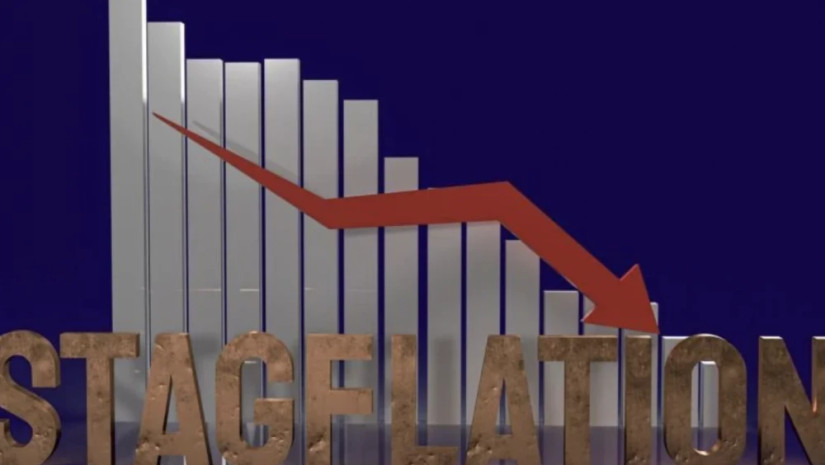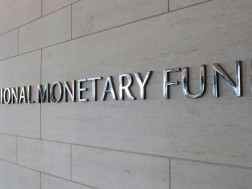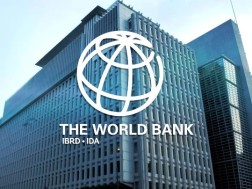Global financial markets run of narratives.
While stagflation is still not the mainstream or Wall Street sell-side base case scenario. Six Nobel Prizes have been awarded for work saying stagflation is all too possible.
Milton Friedman (Noble prize 1976) most famously gave credibility back to the Federal Reserve as his policies helped end the period of stagflation.
With the economy slowing down faster than expected deceleration in growth larger than expected, but inflation data higher than expected.
The Stagflation narrative has come back on investors’ radar and might still be an underappreciated risk by investors as many fear that the pent-up demand burst in post-pandemic activity could start to slow, while inflation may accelerate to high levels with an ultra-easy monetary policy in place.
Stagflation is generally considered to be when the rate of inflation is high but economic growth has slowed and unemployment remains elevated.
Stagflation—a troubling mix of stubbornly high inflation and flat economic growth – could be the biggest single market risk.
Conventional thinking in economics, often stated that stagflation is supposed to be impossible. Stagnation means a standstill in economic growth, and inflation comes from too many dollars chasing too few goods, the argument runs. How can you have all that chasing of goods without jobs and production moving up in turn?
Stagflation is a “portmanteau” term, where two things that you might not expect to be together fuse into unity.
In the 1970s, investors saw the unemployment rate go from 4% to 9% and inflation rising from 1% to 11%.
Historically, stocks and bonds do poorly in stagflation periods. Precious metals gold & silver perform best followed by commodities (especially oil).
The QE (Quantitative easing) years were characterized by concerns about deflation the post covid world could struggle with stagflation
In a post covid world, stagflation could be a real risk for investors and investment portfolios.
Central banks can become the victim of their own rhetoric. "inflation will be transitory."
Post-covid extraordinary amounts "of accommodative monetary policy by central banks and fiscal stimulus from governments "may well fire more inflation."
European politicians like Former Italian Prime Minister Mario Monti stated that the greatest threat to Europe’s economic recovery from the coronavirus pandemic is “stagflation.”
Though sustained inflationary forces from higher commodity prices are neither part of expectations nor official forecasts in the Unites states nor Europe, other sources of inflation are rising in Europe and the U.S threatening the lower prices, lower-bond-yields thesis. Carbon prices, the future cost of power, natural gas, and shipping are all at record highs.
For financial markets, the question of whose inflation expectations matter to monetary policy and which indicators should be monitored are important. In terms of inflation pressures arising from labor and goods markets, it would be appropriate to consider inflation expectations across firms and households which are engaged in these markets.
Stagflation is ‘a legitimate risk’ that would be painful for "peak valuation" equity markets.
Stagflation is absolutely the biggest risk for every investor in long-only portfolios.
In a stagflation scenario, the stock-bond correlation that everyone expects” will keep their investment portfolios diversified should risk appetite fall., could break down.
A traditional portfolio of 60% stocks and 40% bonds could see a “disastrous outcome” should stagflation become a market reality. A scenario of stocks and bonds selling off together would be the ultimate risk-off environment. Where AI-driven selling begets selling.
Stagflation could pose a major problem because central banks can’t really come to the rescue and cut interest rates anymore.
The US Federal Reserve has been letting the economy run hot, aiming for more progress in the American labor market. August 2021 Unites states wholesales prices rose 8.3% on an annual basis, the biggest advance on record.
Some argue that inflation is transitory. But the United States economy’s two largest markets — for labor and housing — suggest that significant inflation will be sustained so do reports of rising shortages everywhere, from supermarket shelves to semiconductors.
Portfolio review discussions increasingly need to focus on the changing market narrative of From reflation to stagflation, and how to position multi-generational investment portfolios for the real risk of stagflation?
While the reflation trade, sold & promulgated by Wall Street sell-side banks&brokerages sees a strong pick-up in global economic growth and inflationary pressures, stagflation sees higher inflation without much real growth.
So far, many economies around the world seem to strengthen together with inflationary data. Yet, Today, with inflation rising to levels last seen 30 years ago and with unemployment remaining stubbornly high amid the COVID-19 pandemic despite massive policy stimulus, we may again be entering a prolonged period of stagflation.
Equity markets however are still pricing stocks and sectors on the assumption that problems hindering growth will be resolved investors' risk appetite might change when economic growth might not be strong enough to sustain record high asset prices. In a stagflation scenario, equity valuations will need to correct according to the real economy’s activity. Otherwise, nominal growth (real growth plus inflation) may continue to rise through inflation, eroding value from asset prices.
Consumer staple stocks with attractive dividend yields coupled with GEM Global Emerging Markets value stocks might fare best to protect portfolios from stagflation risk. Staples will be a good market sector because they are necessary to live despite high inflation.
Rising inflation expectations which sooner or later will translate into higher interest rates and thus higher discount rates on future cash flows. This could hit duration assets such as long-dated fixed income and high growth and expensive valuation stocks the most.
The relationship between economic growth and inflation changes during periods of stagflation and stock market metrics like earnings yield models and equity returns models exhibit different behavior between periods of stagflation and no-stagflation.
Stock market investing and portfolio construction, therefore, need to be approached differently during periods of stagflation.
Rainer Michael Preiss serves as Portfolio Strategist at Golden Equator Wealth Singapore.
















